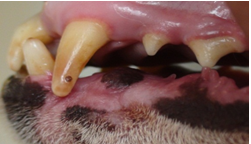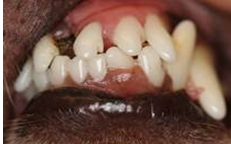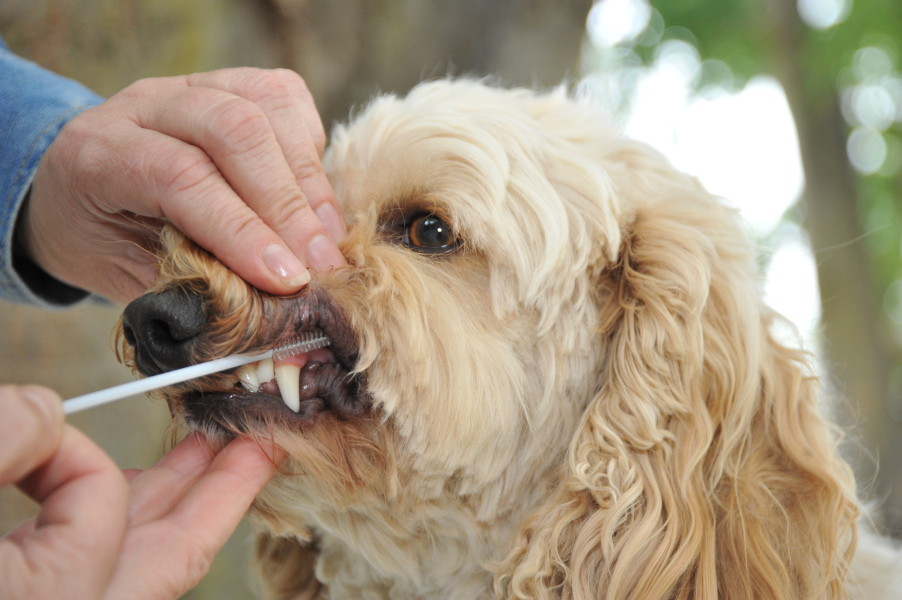Quick Summary


Click here for Price and Turnaround Time
Phenotype: Familial enamel hypoplasia (FEH) is characterized by enamel pitting and tooth discoloration; often teeth are unusually small, pointed, and prone to increasing gaps between teeth with age.
Mode of Inheritance: Autosomal recessive
Alleles: N = Normal, FEH = Familial enamel hypoplasia
Breeds appropriate for testing: Italian Greyhound
Explanation of Results:
- Dogs with N/N genotype will not have familial enamel hypoplasia and cannot transmit this variant to their offspring.
- Dogs with N/FEH genotype will not be affected by familial enamel hypoplasia, but are carriers. They will transmit this variant to 50% of their offspring. Matings between two carriers are predicted to produce 25% familial enamel hypoplasia-affected puppies.
- Dogs with FEH/FEH genotype will have familial enamel hypoplasia and will transmit this variant to all of their offspring.
Results of this test can be submitted to the OFA (Orthopedic Foundation for Animals)
Italian Greyhound Health Panel
$105 per animal
Sample Collection
Dog DNA tests are carried out using cells brushed from your dog's cheeks and gums. The preferred cytology brushes are sent to you by mail, or you may provide your own brushes. For accepted alternative brushes, click here
We recommend waiting until puppies are at least three weeks old before testing.

Step-By-Step:
- Make sure the dog has not had anything to eat or drink for at least 1 hour prior to collecting sample.
- When swabbing puppies, isolate each puppy from the mother, littermates and any shared toys for 1 hour prior to swabbing. Puppies should not have nursed or eaten for 1 hour prior to collecting sample.
- If collecting samples from more than one dog, make sure to sample one dog at a time and wash your hands before swabbing another dog.
- Label brush sleeve with name or ID of dog to be sampled.
- Open brush sleeve by arrow and remove one brush by its handle.
- Place bristle head between the dog’s gums and cheek and press lightly on the outside of the cheek while rubbing or rotating the brush back and forth for 15 seconds.
- Wave the brush in the air for 20 seconds to air dry.
- Insert brush back into sleeve.
- Repeat steps 5 - 8 for each unused brush in sleeve on a fresh area of cheek and gums. Make sure to use and return all brushes sent by the VGL. In most cases, it will be 3 brushes per dog. If using interdental gum brushes, please note that the VGL requires 4 brushes per dog and only moderate or wide interdental gum brushes are accepted.
- Do not seal brushes in sleeve.
- Place all samples in an envelope and return to the address provided.
ATTENTION:
- Do not collect saliva/drool – the key to obtaining a good sample is getting cheek cells on the swab
- Do not rub swab on the dog’s tongue or teeth – this will result in poor quality sample
- Do not collect a sample from a puppy that has recently nursed – the mother’s genetic material can rub off on the puppy’s mouth and contaminate the sample
Autosomal recessive amelogenesis imperfecta (ARAI) is an inherited genetic disorder of tooth enamel that occurs in Italian Greyhounds. It is commonly known to breeders as familial enamel hypoplasia (FEH). It is characterized by enamel pitting and tooth discoloration; often teeth are unusually small, pointed and prone to increasing gaps between teeth with age. There appears to be no association of FEH with periodontitis.
Dr. Niels Pedersen and his research group at the School of Veterinary Medicine, University of California, Davis identified the mutation associated with FEH in Italian Greyhounds. It is estimated that 14% of Italian Greyhounds are affected with FEH and 30% are carriers.
Testing for FEH assists owners and breeders in identifying affected and carrier dogs. Breeders can use results from the test as a tool for selection of mating pairs to avoid producing affected dogs.
